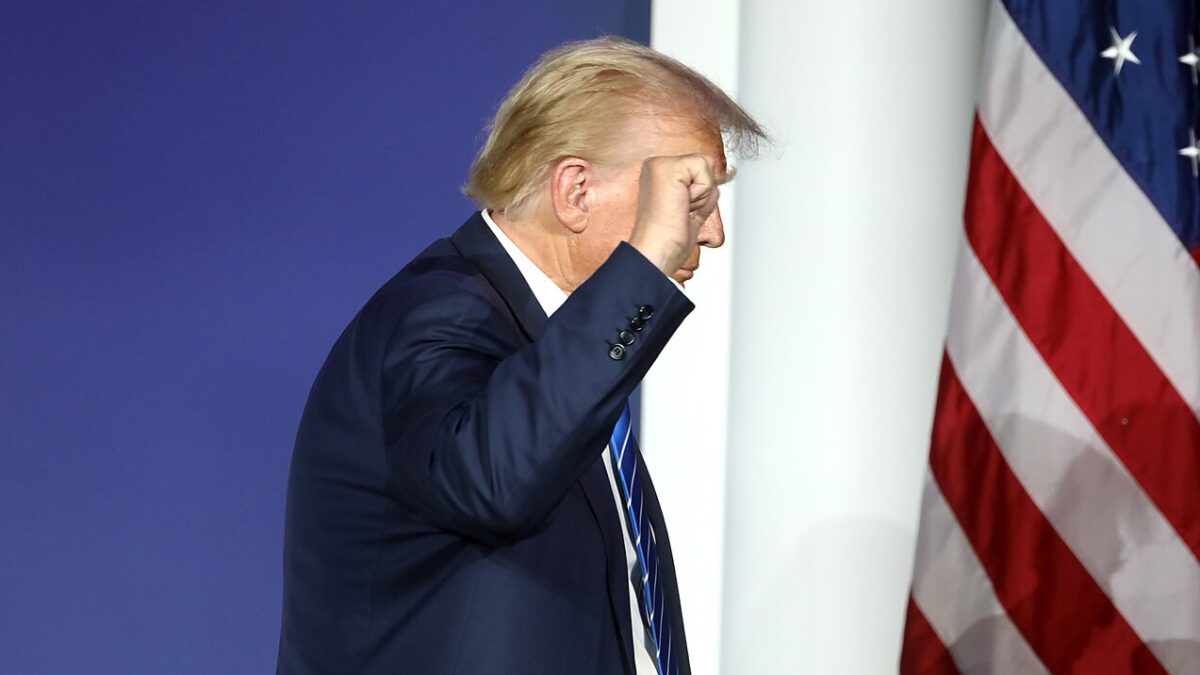
Like many other Americans, I got a letter last week. This letter is becoming an annual tradition, arriving on my doorstep in October to inform me of my Obamacare insurance premium hike.
Last year, the letter said my Bronze plan, purchased on the marketplace formed by the, ahem, Affordable Care Act, would increase by almost 60 percent.
This year, my premium is going up 96 percent. Ninety-six percent. My monthly payment, which was the amount of a decent car payment, is now the size of a moderate mortgage. The president refers to these for thousands of citizens as “a few bugs” when to us it feels like a flameout.
For this astronomical payment, I get a plan with an astronomical deductible that my healthy family of three will likely never hit except in the most catastrophic of circumstances.
Let’s rewind to my pre-Obamacare health care situation. Throughout my life and career, I have had both employer-based coverage and significant periods during which I bought private insurance with high deductibles and low premiums. During the run-up to Obamacare, President Obama referred to these plans as “junk” plans, but my family and I received perfectly good care and service through them. We were responsible, healthy citizens consuming a small amount of health care, paying out of pocket for most of it, and making sure we weren’t deadbeats should something catastrophic come to pass. Our health insurance was a rational and responsible purchase.
The President’s Huge, Broken Promises
When President Obama sold Obamacare to the American people, he promised three things. 1) That we could keep our plans if we liked them. 2) That the new system would offer competition between great options through an Obamacare marketplace, and 3) That our premiums would go down. Not “go up slower” or “go up but eventually go down,” but go down— $2,500 was the figure.
The letter I got last week is a betrayal of every one of those promises. I did not get to keep the plan I liked. The new system does not offer competition between great options through an Obamacare marketplace. And my premiums have gone up more than 150 percent in two years.
This was all predictable and predicted, by many (including me!).
Hillary Clinton conceded this reality at the second debate in response to an audience question about the Affordable Care Act. She said, in effect, “It’s not affordable, but it does other stuff.”
“Well, I think Donald was about to say he’s going to solve it by repealing it and getting rid of the Affordable Care Act. And I’m going to fix it, because I agree with you. Premiums have gotten too high. Copays, deductibles, prescription drug costs, and I’ve laid out a series of actions that we can take to try to get those costs down.”
As most apologists for the law do, she listed the handful of things people like the sound of— more people insured, no pre-existing conditions, lifetime limits on out-of-pocket costs, stay on your parents’ insurance until you’re 26!
But those benefits came with added costs, mandates, and overhead, and we’re now seeing the fruits of the whole law in a 25-percent average rate increase. When congressional Democrats were constructing the worst legislative Jenga tower of all time, they called critics’ predictions “lies.”
But here we are with lower-than-expected participation in exchanges, extremely low numbers of healthy young people in the risk pools, and insurance companies jacking up rates or exiting the exchange entirely in an attempt to remain solvent under the weight of increasing benefits for increasingly older, sicker customers.
This in turn leads to less competition on the exchanges, which leads to fewer young and healthy people buying into these terrible and terribly expensive products. The Department of Health and Human Services determined one of every five people shopping on Obamacare’s exchange has only one insurer to choose. This is what the death spiral you may vaguely recall the president dismissing in 2009 looks like.
Buying Really Expensive Junk
I have many blessings, two of which are the means to pay for health insurance and the good fortune not to need much of it. As a result, in the post-Obamacare world, I am a prime gouging target. I’m seeing a 96 percent increase because I am healthy, unsubsidized, and getting fewer and fewer choices. My health care company abandoned the lowest-tier Bronze option entirely in its attempt to stay solvent, funneling me into a Silver plan with higher levels of care I don’t need at a higher price I don’t want.
My individual deductible is more than two times the high deductible on my old “junk” plan. My family’s deductible is ten times what the IRS defines as a high deductible. I now pay a high premium for a high-deductible plan, while also paying co-pays and out-of-pocket costs, meaning my plan is both junkier and more expensive.
Two points follow from this, neither of which has anything to do with feeling bad for me. But my 96-percent increase in premiums is a useful, unvarnished look at Obamacare’s effects. One, if this is a hardship for me—if I’m sitting around thinking about all the lost opportunity and savings in that giant monthly sum— so are many others who have far less than I do. Even with subsidized premiums, many are finding they can’t afford their deductibles, making their “affordable” health insurance useless.
Mr. Fanning, the North Texan, said he and his wife had a policy with a monthly premium of about $500 and an annual deductible of about $10,000 after taking account of financial assistance. Their income is about $32,000 a year.
The Fannings dropped the policy in July after he had a one-night hospital stay and she had tests for kidney problems, and the bills started to roll in.
Josie Gibb of Albuquerque pays about $400 a month in premiums, after subsidies, for a silver-level insurance plan with a deductible of $6,000. ‘The deductible,’ she said, ‘is so high that I have to pay for everything all year — visits with a gynecologist, a dermatologist, all blood work, all tests. It’s really just a catastrophic policy.’
Further, the system simply funnels customers into far more expensive plans every year unless they go to the semi-functional exchange during November and December to look around for something else. How many miss the letter and open enrollment thanks to living their lives between Thanksgiving and Christmas and end up with a New Year’s present in the form of a new bill they can’t afford?
Punished For Rejecting Expensive Junk
Two, is it any wonder exchange enrollment isn’t what the Obama administration hoped and needed it to be? Putting aside the embarrassing launch debacle (also predictable and predicted by me!), the law has created products that aren’t worth buying. I’m a responsible citizen and single parent of two young children. Let’s think about the incentives this system presents.
It would make far more economic sense to pay the tax penalty for not having insurance, save the monthly payment, and squirrel it away for a catastrophic event that may never occur. Should a catastrophic event occur, work out a payment plan with doctors and hospitals, for which you’d use the squirreled away premiums until the next open enrollment period, at which point you just jump right back into a plan again because they can’t keep you out for preexisting conditions. Should a catastrophic event never occur, you’ve got no small part of a college education put away. My health insurance used to be a rational and responsible purchase. It’s beginning to feel like neither.
There are plenty of young, healthy people the system needs who are finding the same. As the New York Times reported last year at this time:
Alexis C. Phillips, 29, of Houston, is the kind of consumer federal officials would like to enroll this fall. But after reviewing the available plans, she said, she concluded: ‘The deductibles are ridiculously high. I will never be able to go over the deductible unless something catastrophic happened to me. I’m better off not purchasing that insurance and saving the money in case something bad happens.’
Those who support the law during its meltdown suggest jacking up the cost of rejecting this terrible product to make it more painful than the cost of the terrible product. To them, we are but Westley in the Pit of Despair and they are the technocratic torturer at the switch puzzling just how much pain they can inflict without going full Humperdinck and killing the strapping, young patient.
That’s how the Affordable Care Act became neither affordable nor care. It’s almost as if you could have predicted it. Inconceivable!









